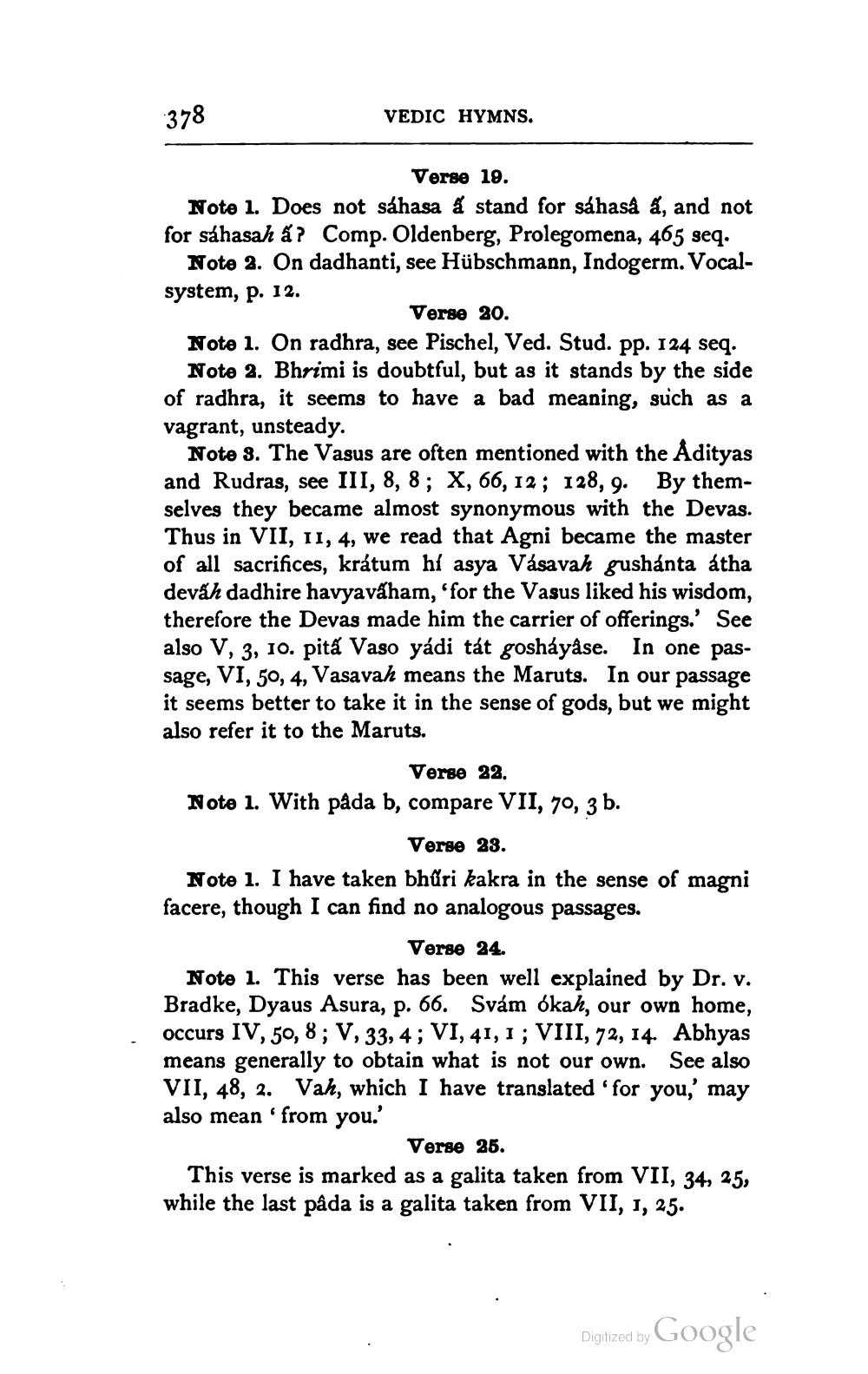________________
378
VEDIC HYMNS.
Verse 19. Note 1. Does not sáhasa & stand for sahaså , and not for sahasah á ? Comp. Oldenberg, Prolegomena, 465 seq.
Note 2. On dadhanti, see Hübschmann, Indogerm. Vocalsystem, p. 12.
Verse 20. Note 1. On radhra, see Pischel, Ved. Stud. pp. 124 seq.
Note 2. Bhrimi is doubtful, but as it stands by the side of radhra, it seems to have a bad meaning, such as a vagrant, unsteady.
Note 3. The Vasus are often mentioned with the Adityas and Rudras, see III, 8, 8; X, 66, 12; 128, 9. By themselves they became almost synonymous with the Devas. Thus in VII, II, 4, we read that Agni became the master of all sacrifices, krátum hi asya Vásavah gushánta atha devah dadhire havyaváham, 'for the Vasus liked his wisdom, therefore the Devas made him the carrier of offerings. See also V, 3, 10. pita Vaso yádi tát gosháyåse. In one passage, VI, 50, 4, Vasavah means the Maruts. In our passage it seems better to take it in the sense of gods, but we might also refer it to the Maruts.
Verse 22. Note 1. With pada b, compare VII, 70, 3 b.
Verse 23. Note 1. I have taken bhůri kakra in the sense of magni facere, though I can find no analogous passages.
Verse 24. Note 1. This verse has been well explained by Dr. v. Bradke, Dyaus Asura, p. 66. Svám ókah, our own home, occurs IV, 50, 8; V, 33, 4; VI, 41, 1 ; VIII, 72, 14. Abhyas means generally to obtain what is not our own. See also VII, 48, 2. Vah, which I have translated 'for you,' may also mean' from you.'
Verse 25. This verse is marked as a galita taken from VII, 34, 25, while the last pâda is a galita taken from VII, 1, 25.
Digitized by
Digitized by Google




